Ultra-High Repetition Rate Terahertz Time-Domain Spectroscopy for Micrometer Layer Thickness Measurement
Abstract
:1. Introduction
2. Theoretical Background
2.1. UHRR-THz-TDS Setup without Interferometer
2.2. UHRR-THz-TDS Setup with Interferometer
- We determine the envelope of the interferometer signal.
- We locate two local maxima of the envelope.
- We crop the terahertz measurement signal at the locations of the maxima.
- We assign linearly increasing delay values from 0 to T to the sampled terahertz measurement signal in that range.
3. Experimental Results and Signal Processing
3.1. Experimental Setup
3.1.1. Interferometer
3.1.2. Terahertz System
3.2. Measurement Results and Signal Processing
3.2.1. Synchronization and Cropping in the Time Domain
- The signals are accurately synchronized.
- The signals contain exactly one period, thus facilitating a subsequent fast Fourier transform (FFT).
- The delay axis can be scaled according to the known repetition rate of the MLLD.
3.2.2. Normalization in the Frequency Domain
3.2.3. Results for Thin Samples
4. Conclusions
Author Contributions
Funding
Data Availability Statement
Acknowledgments
Conflicts of Interest
References
- Woolard, D.L.; Brown, R.; Pepper, M.; Kemp, M. Terahertz Frequency Sensing and Imaging: A Time of Reckoning Future Applications? Proc. IEEE 2005, 93, 1722–1743. [Google Scholar] [CrossRef]
- Naftaly, M.; Vieweg, N.; Deninger, A. Industrial Applications of Terahertz Sensing: State of Play. Sensors 2019, 19, 4203. [Google Scholar] [CrossRef] [Green Version]
- Damyanov, D.; Friederich, B.; Yahyapour, M.; Vieweg, N.; Deninger, A.; Kolpatzeck, K.; Liu, X.; Czylwik, A.; Schultze, T.; Willms, I.; et al. High Resolution Lensless Terahertz Imaging and Ranging. IEEE Access 2019, 7, 147704–147712. [Google Scholar] [CrossRef]
- Mittleman, D.M. Twenty years of terahertz imaging. Opt. Express 2018, 26, 9417–9431. [Google Scholar] [CrossRef] [PubMed]
- Jepsen, P.; Cooke, D.; Koch, M. Terahertz spectroscopy and imaging—Modern techniques and applications. Laser Photonics Rev. 2011, 5, 124–166. [Google Scholar] [CrossRef]
- Janke, C.; Först, M.; Nagel, M.; Kurz, H.; Bartels, A. Asynchronous optical sampling for high-speed characterization of integrated resonant terahertz sensors. Opt. Lett. 2005, 30, 1405–1407. [Google Scholar] [CrossRef] [PubMed]
- Bartels, A.; Dekorsy, T. Terahertz-Spektroskopie mit High-Speed ASOPS. Tech. Mess. 2008, 75, 23–30. [Google Scholar] [CrossRef] [Green Version]
- Baker, R.D.; Yardimci, N.T.; Ou, Y.H.; Kieu, K.; Jarrahi, M. Self-triggered Asynchronous Optical Sampling Terahertz Spectroscopy using a Bidirectional Mode-locked Fiber Laser. Sci. Rep. 2018, 8, 14802. [Google Scholar] [CrossRef]
- Kim, Y.; Yee, D.S. High-speed terahertz time-domain spectroscopy based on electronically controlled optical sampling. Opt. Lett. 2010, 35, 3715–3717. [Google Scholar] [CrossRef]
- Hochrein, T.; Wilk, R.; Mei, M.; Holzwarth, R.; Krumbholz, N.; Koch, M. Optical sampling by laser cavity tuning. Opt. Express 2010, 18, 1613–1617. [Google Scholar] [CrossRef] [PubMed]
- Wilk, R.; Hochrein, T.; Koch, M.; Mei, M.; Holzwarth, R. Terahertz spectrometer operation by laser repetition frequency tuning. J. Opt. Soc. Am. B 2011, 28, 592–595. [Google Scholar] [CrossRef]
- Kolano, M.; Gräf, B.; Weber, S.; Molter, D.; von Freymann, G. Single-laser polarization-controlled optical sampling system for THz-TDS. Opt. Lett. 2018, 43, 1351–1354. [Google Scholar] [CrossRef]
- Tani, M.; Matsuura, S.; Sakai, K.; Hangyo, M. Multiple-frequency generation of sub-terahertz radiation by multimode LD excitation of photoconductive antenna. IEEE Microw. Guid. Wave Lett. 1997, 7, 282–284. [Google Scholar] [CrossRef]
- Morikawa, O.; Tonouchi, M.; Hangyo, M. A cross-correlation spectroscopy in subterahertz region using an incoherent light source. Appl. Phys. Lett. 2000, 76, 1519–1521. [Google Scholar] [CrossRef]
- Scheller, M.; Koch, M. Terahertz quasi time domain spectroscopy. Opt. Express 2009, 17, 17723–17733. [Google Scholar] [CrossRef]
- Merghem, K.; Busch, S.F.; Lelarge, F.; Koch, M.; Ramdane, A.; Balzer, J.C. Terahertz Time-Domain Spectroscopy System Driven by a Monolithic Semiconductor Laser. J. Infrared Millim. Terahertz Waves 2017, 38, 958–962. [Google Scholar] [CrossRef]
- Tybussek, K.H.; Kolpatzeck, K.; Faridi, F.; Preu, S.; Balzer, J.C. Terahertz Time-Domain Spectroscopy Based on Commercially Available 1550 nm Fabry–Perot Laser Diode and ErAs:In(Al)GaAs Photoconductors. Appl. Sci. 2019, 9, 2704. [Google Scholar] [CrossRef] [Green Version]
- Kolpatzeck, K.; Liu, X.; Tybussek, K.H.; Häring, L.; Zander, M.; Rehbein, W.; Moehrle, M.; Czylwik, A.; Balzer, J.C. System-theoretical modeling of terahertz time-domain spectroscopy with ultra-high repetition rate mode-locked lasers. Opt. Express 2020, 28, 16935–16950. [Google Scholar] [CrossRef] [PubMed]
- Withayachumnankul, W.; Naftaly, M. Fundamentals of Measurement in Terahertz Time-Domain Spectroscopy. J. Infrared Millim. Terahertz Waves 2014, 35, 610–637. [Google Scholar] [CrossRef]
- Withayachumnankul, W.; O’Hara, J.F.; Cao, W.; Al-Naib, I.; Zhang, W. Limitation in thin-film sensing with transmission-mode terahertz time-domain spectroscopy. Opt. Express 2014, 22, 972–986. [Google Scholar] [CrossRef] [PubMed] [Green Version]
- Jahn, D.; Lippert, S.; Bisi, M.; Oberto, L.; Balzer, J.C.; Koch, M. On the Influence of Delay Line Uncertainty in THz Time-Domain Spectroscopy. J. Infrared Millim. Terahertz Waves 2016, 37, 605–613. [Google Scholar] [CrossRef]
- Molter, D.; Trierweiler, M.; Ellrich, F.; Jonuscheit, J.; Freymann, G.V. Interferometry-aided terahertz time-domain spectroscopy. Opt. Express 2017, 25, 7547–7558. [Google Scholar] [CrossRef]
- Rehn, A.; Jahn, D.; Balzer, J.C.; Koch, M. Periodic sampling errors in terahertz time-domain measurements. Opt. Express 2017, 25, 6712–6724. [Google Scholar] [CrossRef]
- Takagi, S.; Takahashi, S.; Takeya, K.; Tripathi, S.R. Influence of delay stage positioning error on signal-to-noise ratio, dynamic range, and bandwidth of terahertz time-domain spectroscopy. Appl. Opt. 2020, 59, 841–845. [Google Scholar] [CrossRef]
- Folks, W.R.; Pandey, S.K.; Boreman, G. Refractive Index at THz Frequencies of Various Plastics. In Optical Terahertz Science and Technology; Optical Society of America: San Diego, CA, USA, 2007; p. MD10. [Google Scholar] [CrossRef] [Green Version]
- D’Angelo, F.; Mics, Z.; Bonn, M.; Turchinovich, D. Ultra-broadband THz time-domain spectroscopy of common polymers using THz air photonics. Opt. Express 2014, 22, 12475–12485. [Google Scholar] [CrossRef] [Green Version]
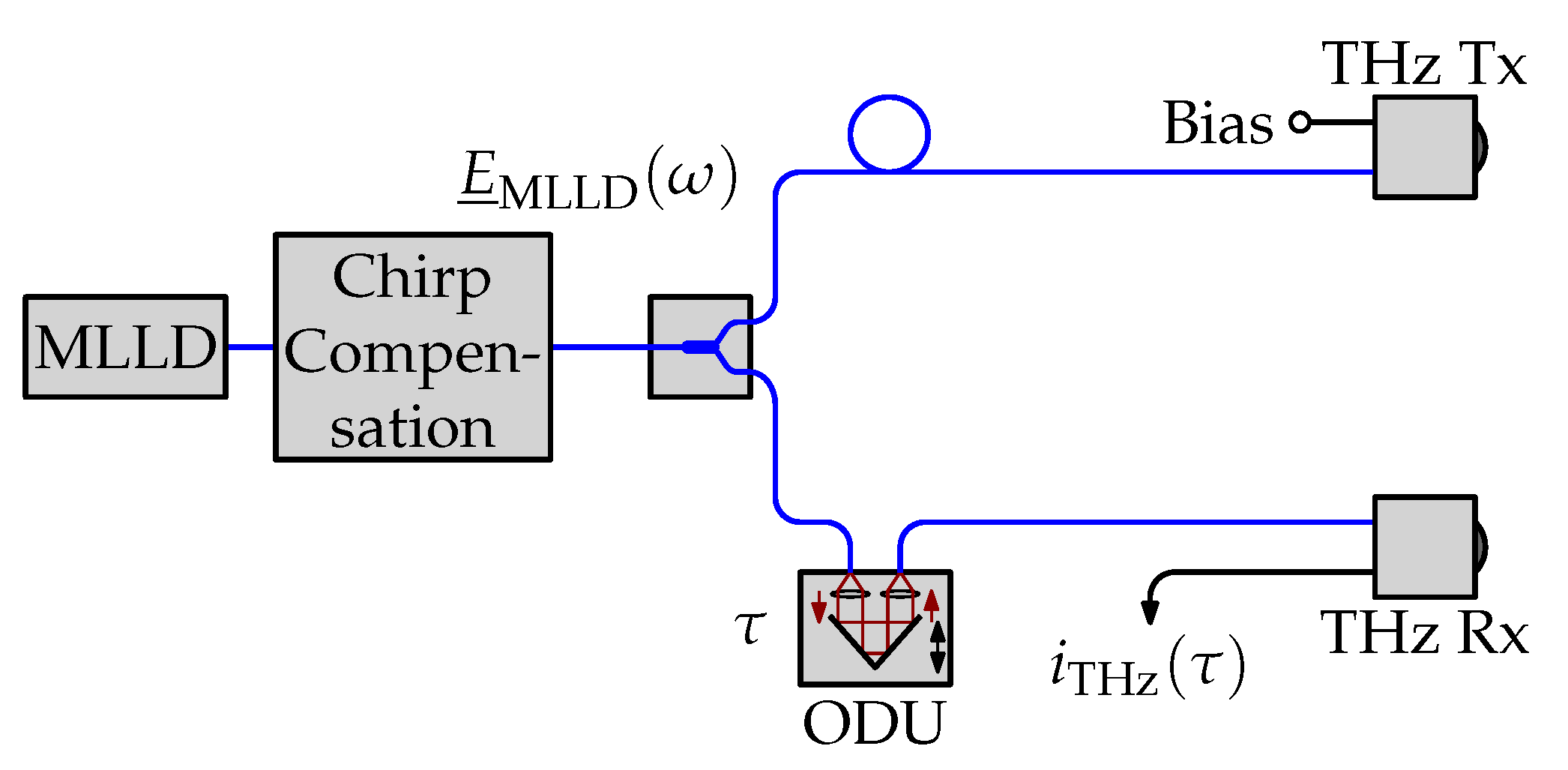
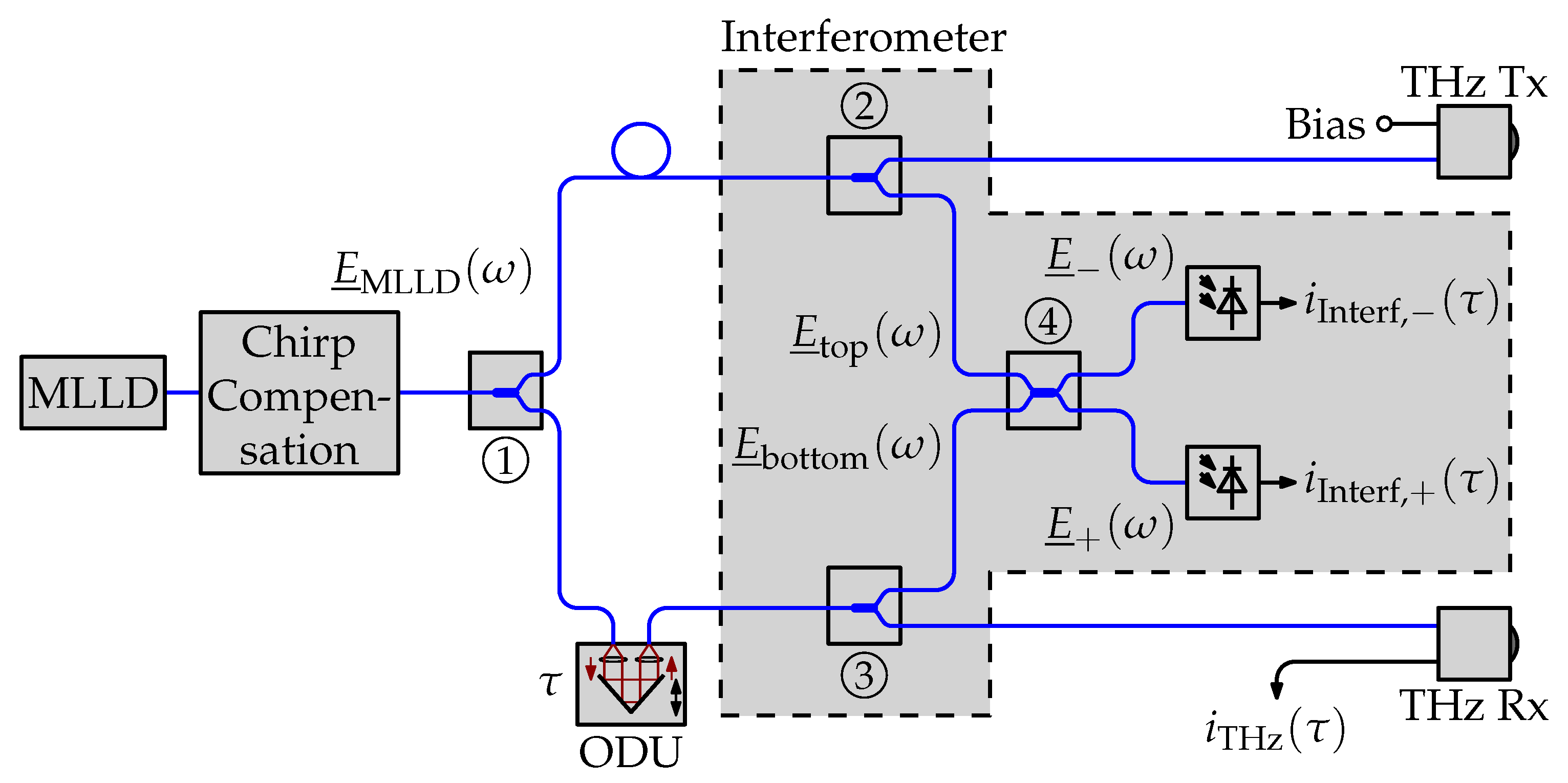

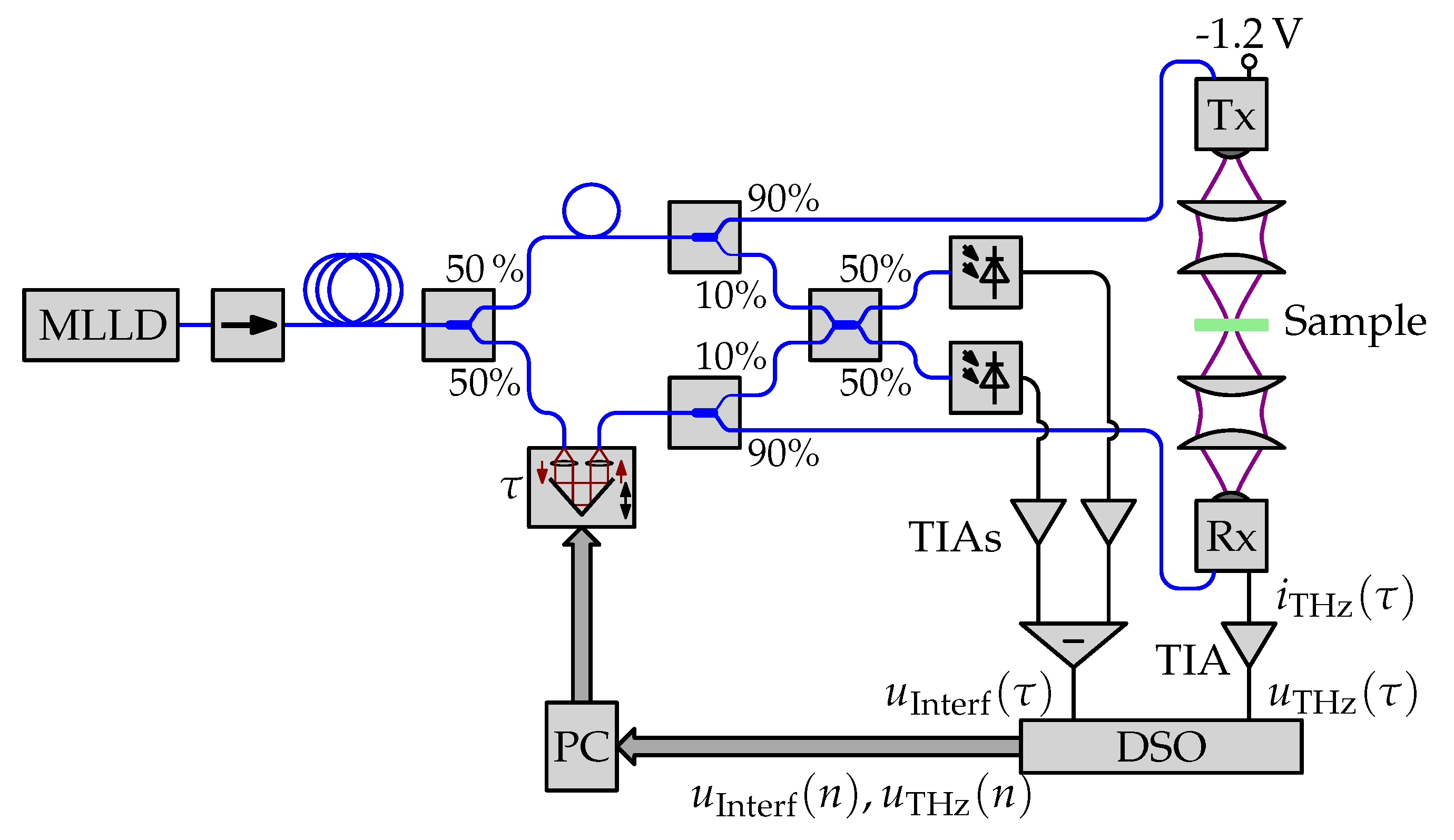

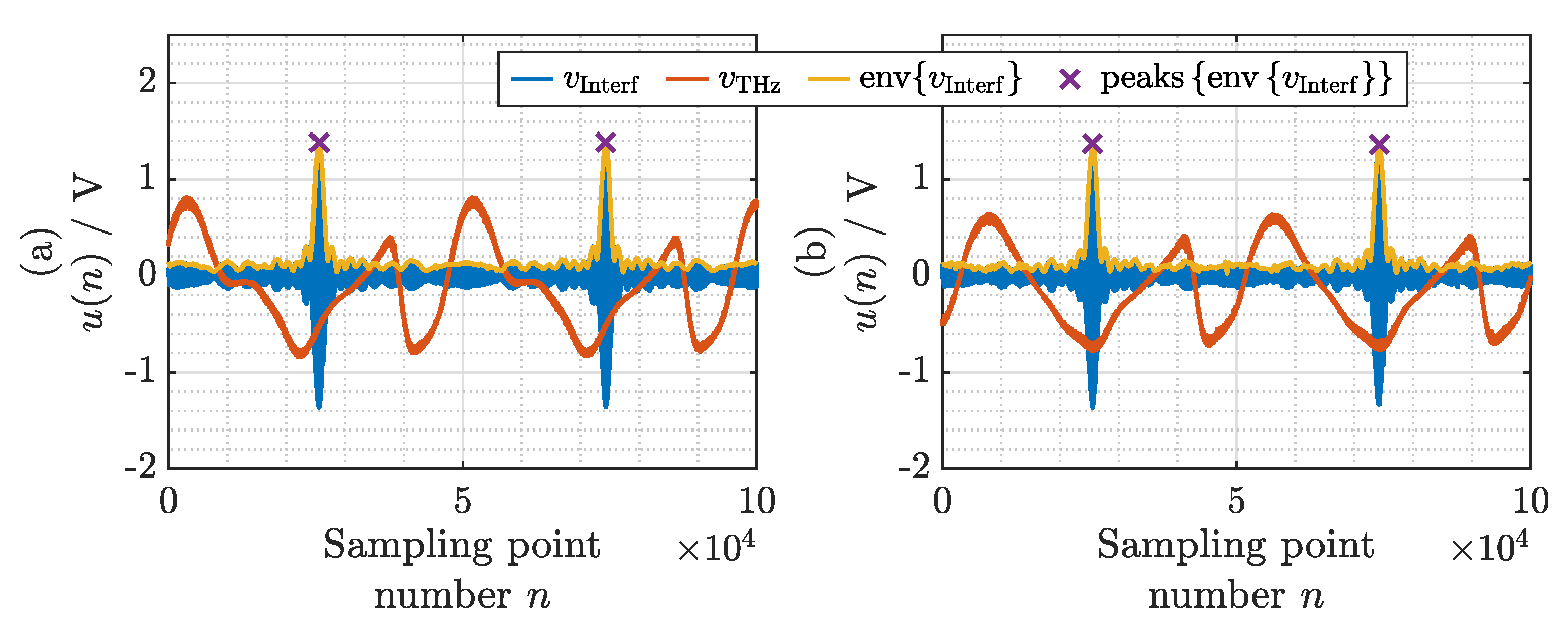
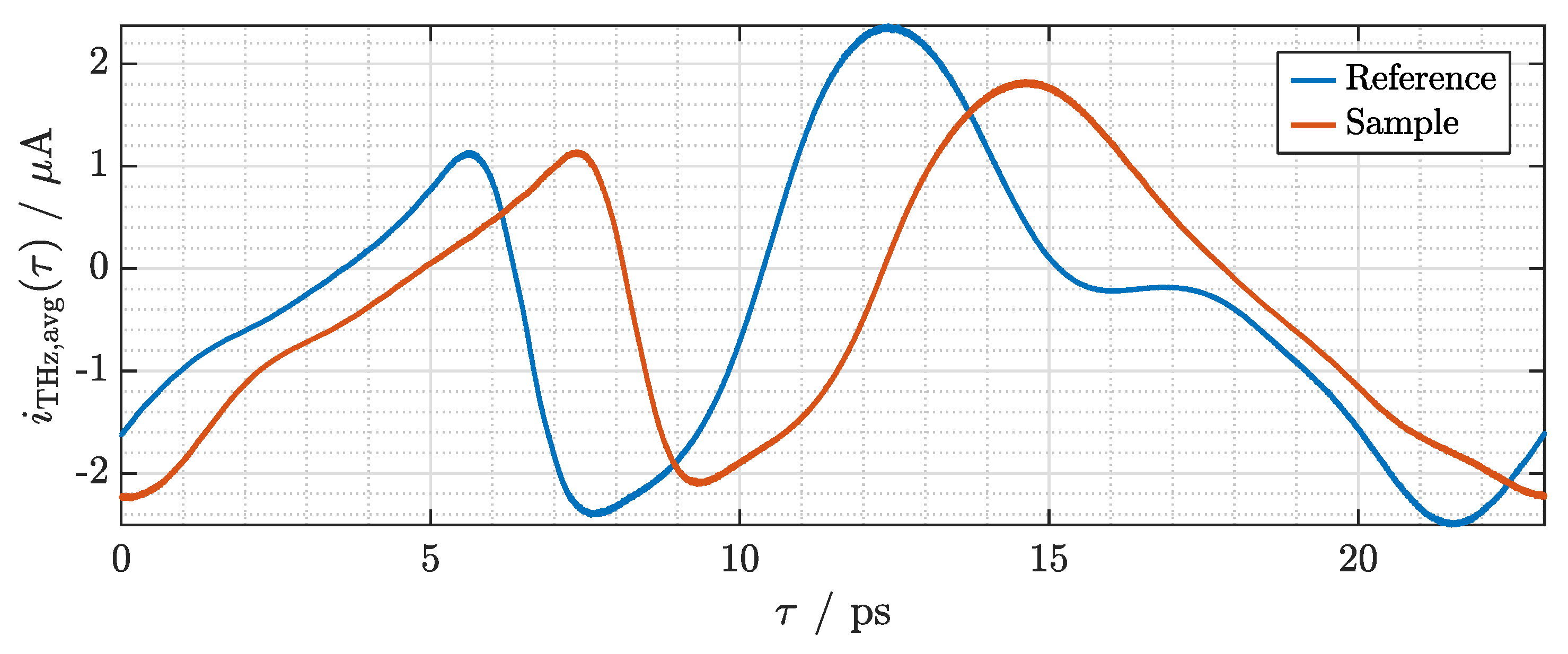
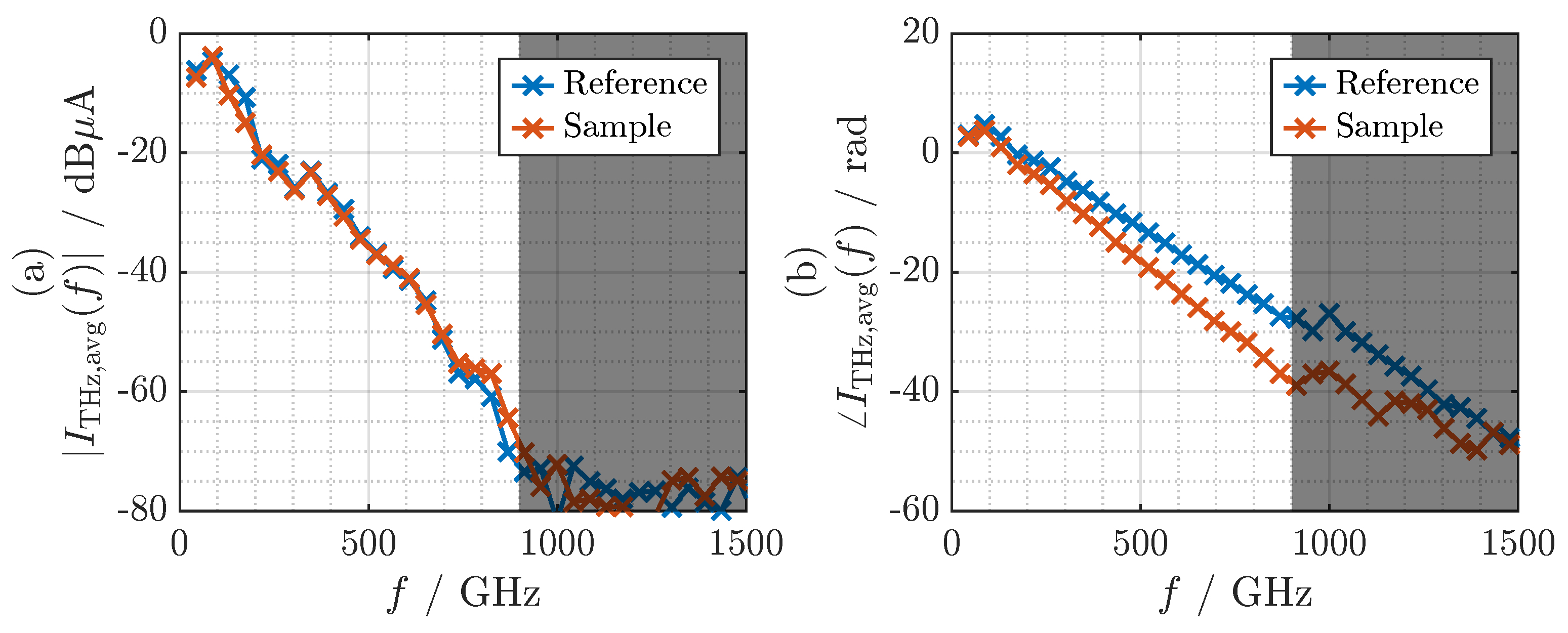
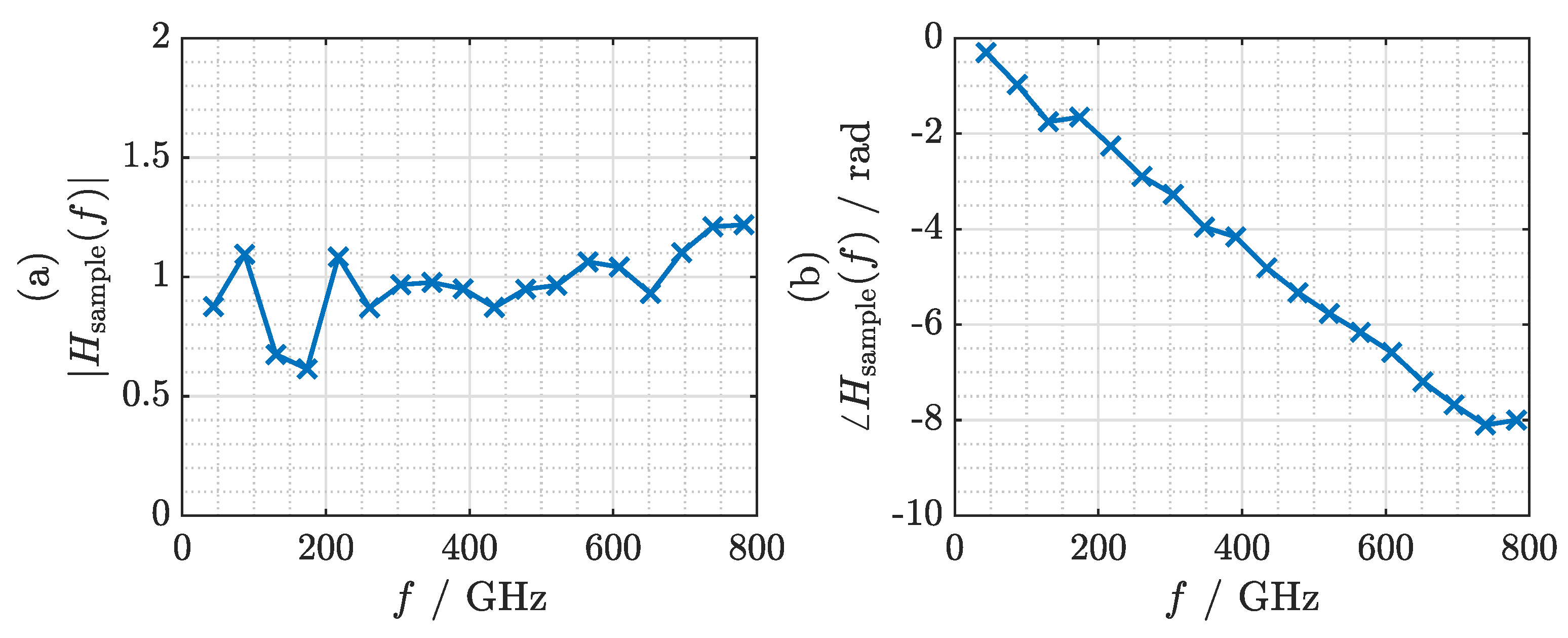
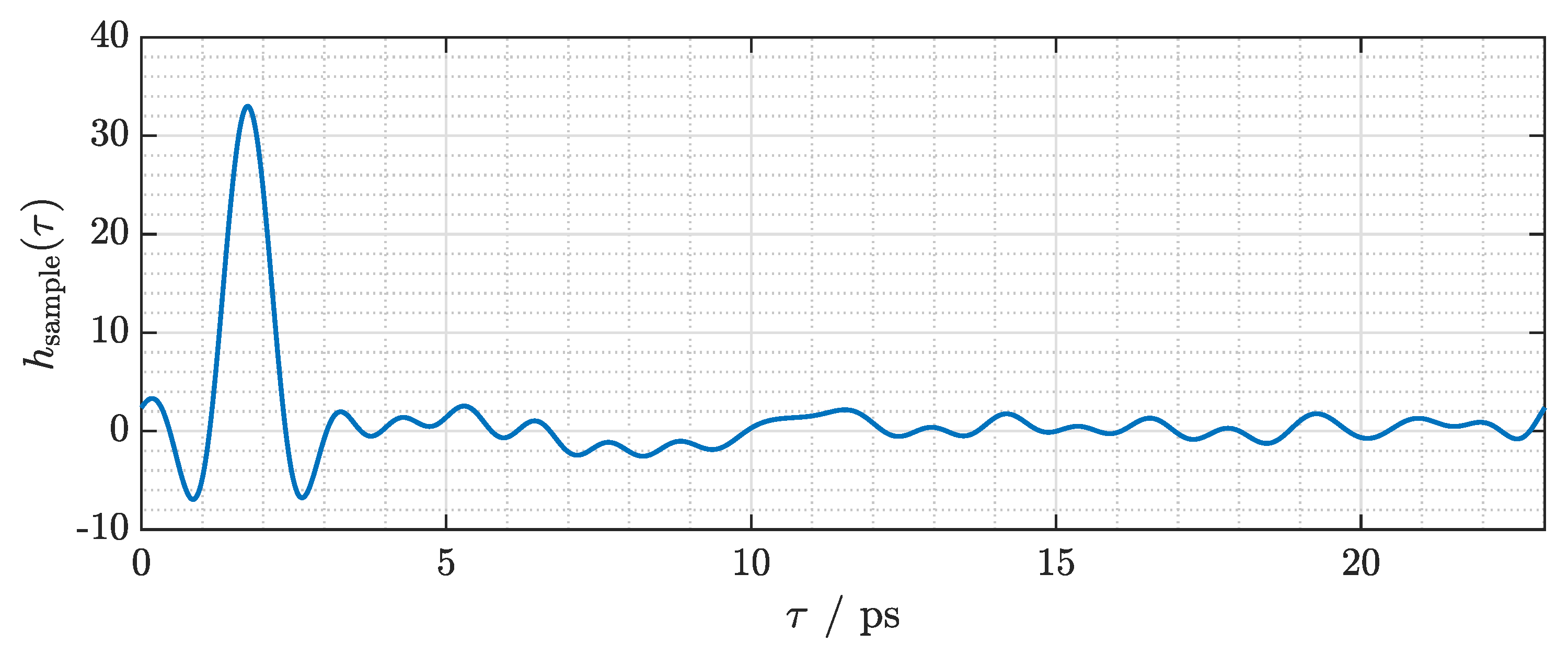
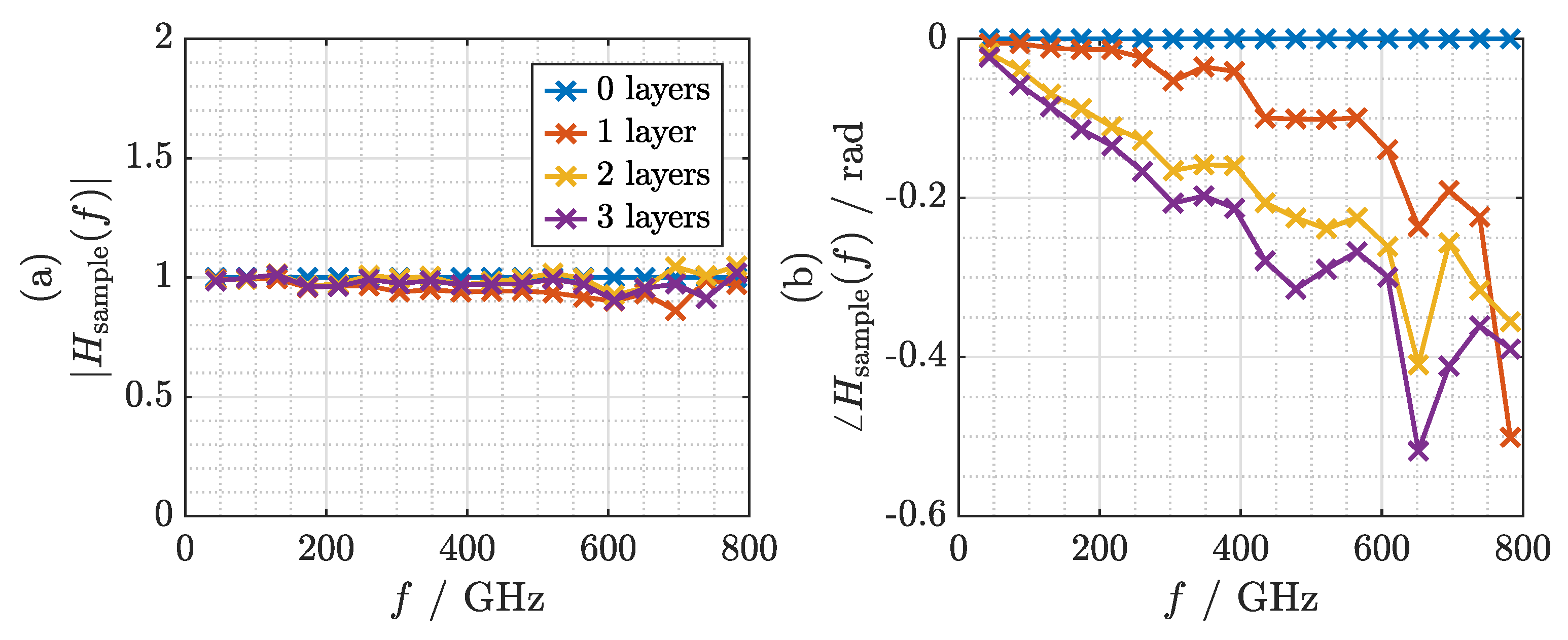
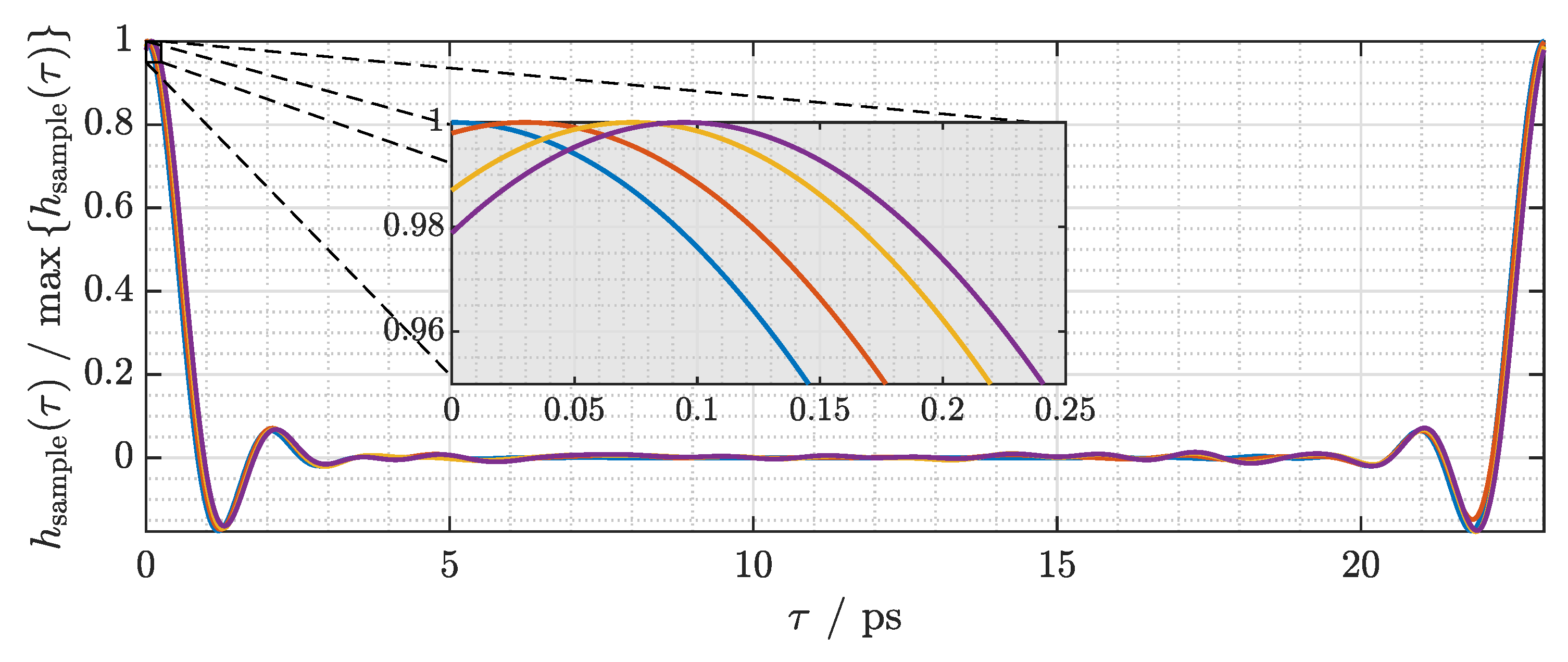
Publisher’s Note: MDPI stays neutral with regard to jurisdictional claims in published maps and institutional affiliations. |
© 2021 by the authors. Licensee MDPI, Basel, Switzerland. This article is an open access article distributed under the terms and conditions of the Creative Commons Attribution (CC BY) license (https://creativecommons.org/licenses/by/4.0/).
Share and Cite
Kolpatzeck, K.; Liu, X.; Häring, L.; Balzer, J.C.; Czylwik, A. Ultra-High Repetition Rate Terahertz Time-Domain Spectroscopy for Micrometer Layer Thickness Measurement. Sensors 2021, 21, 5389. https://doi.org/10.3390/s21165389
Kolpatzeck K, Liu X, Häring L, Balzer JC, Czylwik A. Ultra-High Repetition Rate Terahertz Time-Domain Spectroscopy for Micrometer Layer Thickness Measurement. Sensors. 2021; 21(16):5389. https://doi.org/10.3390/s21165389
Chicago/Turabian StyleKolpatzeck, Kevin, Xuan Liu, Lars Häring, Jan C. Balzer, and Andreas Czylwik. 2021. "Ultra-High Repetition Rate Terahertz Time-Domain Spectroscopy for Micrometer Layer Thickness Measurement" Sensors 21, no. 16: 5389. https://doi.org/10.3390/s21165389







